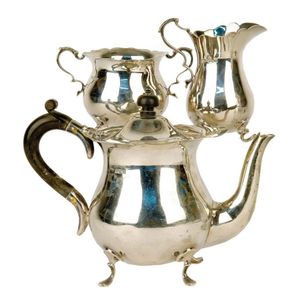19th Century Tortoiseshell Cases Collection
You must be a subscriber, and be logged in to view price and dealer details.
Subscribe Now to view actual auction price for this item
When you subscribe, you have the option of setting the currency in which to display prices to $Au, $US, $NZ or Stg.
- Tortoiseshell - Tortoiseshell is a translucent material that comes from the horny carapace of a certain types of turtles, including the hawksbill turtle. It is often therefore mounted on a colour underground - often red - or inlaid with gold or silver thread, as seen in Boulle furniture.
The texture and colour nuances of the material are extremely important. Heated tortoiseshell can easily be formed into various shapes. Like other natural materials, tortoiseshell becomes more beautiful with use. In a time before plastic, tortoiseshell was widely used for small objects such as combs and powder compacts.
In 1973, the trade of tortoiseshell worldwide was banned under CITES (The Convention on International Trade in Endangered Species). Prior to importing or exporting items containing tortoiseshell a CITES permit must be obtained. Tortoiseshell items cannot be traded on Ebay.
"Faux tortoiseshell", another case of man initiating nature, is made from old-style plastics such as celluloid and cellulos and is coloured with red, yellow and brown spots to imitate the genuine article. It is commonly used in glasses frames, musical instruments and costume jewellery. - Circa - A Latin term meaning 'about', often used in the antique trade to give an approximate date for the piece, usually considered to be five years on either side of the circa year. Thus, circa 1900 means the piece was made about 1900, probably between 1895 and 1905. The expression is sometimes abbreviated to c.1900.
This item has been included into following indexes:
Visually similar items

An early Georgian style three piece tea set, baluster shape with serpentine rims, the pot with a stained boxwood handle and finial, the sugar and milk jug with acanthus capped handles, each piece raised on four pad feet. Sheffield 1911 by Mappin & Webb. We

Early American sterling silver porringer, 15 cm, 10.4 cm, 4 cm high, 68 grams

A pair of dragon and phoenix dishes, with iron red Guangxu mark, diameter 14 cm

An elaborate repousse copper mandala, Bhavacakra with animals of the zodiac, in centre, lion, cockerel and snake, aloft two lions, beneath two deer with ratna symbol and Yali head, border inset with turquoise jeweling, mounted copper rods, losses to some t
